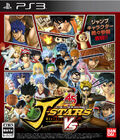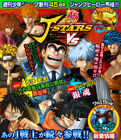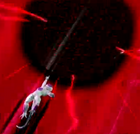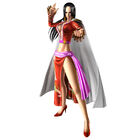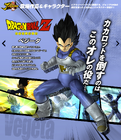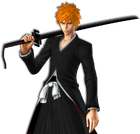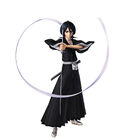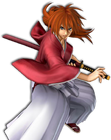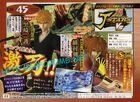(→Trivia) Tag: Visual edit |
Tag: rte-source |
||
| Line 311: | Line 311: | ||
PVJTorikoArt.png|Toriko |
PVJTorikoArt.png|Toriko |
||
PVJGokuArt.png|Goku Son |
PVJGokuArt.png|Goku Son |
||
| + | Vegeta_(J-Stars_Victory_Vs).jpg|Vegeta |
||
1186037 213328688829124 1825397084 n.jpg|Vegeta |
1186037 213328688829124 1825397084 n.jpg|Vegeta |
||
Vegeta J-Stars.png|Vegeta |
Vegeta J-Stars.png|Vegeta |
||
| + | Frieza_(J-Stars_Victory_Vs).png|Frieza |
||
PVJNarutoArt.png|Naruto Uzumaki |
PVJNarutoArt.png|Naruto Uzumaki |
||
IchigoArt(PVJ).png|Ichigo Kurosaki |
IchigoArt(PVJ).png|Ichigo Kurosaki |
||
| Line 337: | Line 339: | ||
</gallery> |
</gallery> |
||
}} |
}} |
||
| + | |||
==References== |
==References== |
||
{{Reflist}} |
{{Reflist}} |
||
Revision as of 12:45, 4 February 2015
J-Stars Victory Vs (ジェイスターズ ビクトリーバーサ) is a team battle action video game released by Bandai Namco for PlayStation 3 and PlayStation Vita on March 19, 2014. The game combines the universes of several Shonen Jump series. During Jump Festa, a new trailer was released under the name "J-Stars Victory Vs+", annoucing its released in North America in summer 2015 for PlayStation 3 and PlayStation 4.
Overview
Context
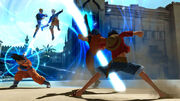
Gameplay
The game was first announced in December 2012 under the title of Project Versus J, in the second 2013 issue of Weekly Shōnen Jump. It was made to commemorate the 45th anniversary of Jump, and is presented as the "ultimate Jump game." J-Stars Victory Vs features total of 52 characters from 32 different manga series: it features main characters from One Piece, Dragon Ball Z, Toriko, Naruto, Rurouni Kenshin, Bleach, KochiKame, Gintama, YuYu Hakusho, Hunter × Hunter, Pyu to Fuku! Jaguar, Chinyuki: Taro to Yukaina Nakama Tachi, Medaka Box, Nisekoi: False Love, To Love-ru, Katekyō Hitman Reborn!, Beelzebub, Kuroko's Basketball, Sket Dance, JoJo's Bizarre Adventure, Hell Teacher Nūbē, Assassination Classroom, Neuro: Supernatural Detective, Saint Seiya, D.Gray-man, Fist of the North Star, Dr. Slump, Tottemo! Luckyman, Bobobo-bo Bo-bobo, Haikyuu!!, Saiki Kusuo no Psi Nan, Sakigake!! Otokojuku, Yu-Gi-Oh! All playable characters are available in the game from the start. The first three characters used to promote the game, Goku, Luffy, and Toriko, are also featured in a Dream 9 Toriko & One Piece & Dragon Ball Z Super Collaboration Special which aired on Fuji TV on April 7, 2013. Hironobu Kageyama, Akira Kushida, and Hiroshi Kitadani are singing the game's theme song "Fighting Stars." The game is available in standard and "Ansion Sound" editions; the Anison Sound Edition includes 21 tracks from the anime each character appears in. Also, pre-order include the "J-Stars Victory Book", a volume bound like a Jump Comics book and filled with information and visuals of Jump heroes over the years. A free augmented-reality (AR) app lets the user see the Jump heroes in the surroundings on the PS Vita.
Gameplay

Toriko, Naruto, Goku, Luffy
J-Stars Victory Vs lets up to four players battle it out against one another in a gameplay and graphical style similar to those of Dragon Ball: Zenkai Battle Royale. A team of two characters has the possibility to have a third support character in the battle.[1] In the PlayStation 3 version of the game, up to four players can fight two vs. two online in vs. mode.[2] Fighters can move and fight in all directions of a 3D battle field, which is partially destructible.[3] Characters have their own play styles too; for example: Goku and Ichigo are mobile fighters that specialize in battling in the air, Luffy and Toriko prefer to rush into combat and unleash barrages of attacks against their enemies, and Kenshin and Naruto specialize in fighting two opponents at the same time. Players should learn the lay of the land and formulate a battle plan with a character suited to it.[4] A defeated character comes back after a set amount of time passes. To win the battle, all three sections of the WIN gauge at the top of the screen have to be filled; the gauge fills one section each time an opponent is defeated.[4] The meter on the top left is Player 1 team's Win gauge and the meter on the top right is the opponent team's Win gauge, the bottom left shows the controlled character's life and stamina meters, and he bottom right has a map of the stage.
Fighters can use regular attacks, power attacks, area-based attacks, and finishing moves:
- Normal Attacks: fast attacks that do not consume stamina. They are the main part of the battle, and all combos begin with them.[4]
- Power Attacks: slow, but powerful strikes that can break an opponent's guard. They use stamina and leave the user open, but they have a big impact if they connect and their power can be increased by charging them up.[4]
- Ranged Attacks: long range attacks that deal a lot of damage. They use stamina, but allow to hit opponents over a wide area.[4] Enemies can sidestep these attacks however.
- Special Moves: super special techniques activated when the Voltage Gauge fills up. It expands when team members deliver (or get hit with) attacks, and it packs enough wallop to decide the match if it can be pulled off.[3] An example of a signature character move is Ichigo's Getsuga Tenshou.
By using different techniques, the player can lead his team to victory. Learning each character's different power, range, and effects is the first step towards being unbeatable.[4]
Modes
J Adventure Mode
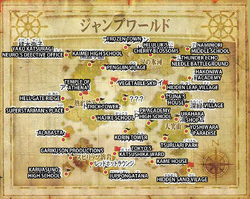
Map of the Jump World
The game features a 4-arc story mode in which "many Jump heroes gather together in the dream Jump World to participate in the special J-Battle Festival". The four arcs are Dynamic Arc, Hope Arc, Investigation Arce, and Pursuit Arc in J-Battle Coliseum. Characters travel through a 45th Shonen Jump anniversary ship, the Memorial Jump, between different lands, such as Alabasta from One Piece and Konoha from Naruto. Various items and cards can be collected, or purchased using J Points accumulated during battles. Items collected are used to customize the Memorial Jump ship (such as adding a Cannon for example), and strengthen characters thanks to various combination of J Stars Cards. The boss is an entity called Dark Phantom, who takes on the same form as the J-Stars hero; he becomes a shadow version of the playable hero character, and can use this character's powers and abilities.
Victory Road
The player's team faces various opponent teams one after another.
Free Battle
The player creates a team and faces a team controlled by either the CPU or other players in up to 2 vs. 2 battles.
Online Mode
Play with or against people across the web. It allows 2 vs. 2 battles.
Gallery Mode
Enjoy all of the Character Data and Figures.
Characters
The main cast of the game is comprised of 39 playable characters and 13 support characters.
Playable characters
- Fighters
- Monkey D. Luffy (One Piece) (Base, Gear Second, Haki)
- Boa Hancock (One Piece)
- Akainu (One Piece)
- Portgas D. Ace (One Piece)
- Goku Son (Dragon Ball Z) (Base, Super Saiyan)
- Vegeta (Dragon Ball Z) (Base, Super Saiyan)
- Frieza (Dragon Ball Z)
- Toriko (Toriko)
- Zebra (Toriko)
- Naruto Uzumaki (Naruto Shippuden) (Base, Sage Mode, Tailed Beast Mode)
- Sasuke Uchiha (Naruto Shippuden) (Base, Susano'o Mode)
- Madara Uchiha (Naruto Shippuden)
- Ichigo Kurosaki (Bleach) (Base, Hollow Form, Final Getsuga Tenshō Form [Special Attack only])
- Sōsuke Aizen (Bleach)
- Kenshin Himura (Rurouni Kenshin)
- Makoto Shishio (Rurouni Kenshin)
- Kankichi Ryoutsu (KochiKame)
- Gintoki Sakata (Gintama)
- Urameshi Yūsuke (YuYu Hakusho) (Base, Demon Mazoku Form)
- Younger Toguro (YuYu Hakusho) (Base, 100% form)
- Hiei (YuYu Hakusho) (Base, Jagan Eye Mode)
- Gon Freecss (Hunter × Hunter) (Base, Nen Release Mode)
- Killua Zaoldyeck (Hunter × Hunter) (Base, Godspeed Mode)
- Taro Yamada (Chinyuki: Taro to Yukaina Nakama Tachi)
- Medaka Kurokami (Medaka Box) (Base, War God Mode)
- Tsunayoshi Sawada with Reborn (Katekyō Hitman Reborn!)
- Tatsumi Oga with Baby Beel (Beelzebub) (Base, Zebel Mark Mode, Super Milk Time [Special Attack only])
- Jonathan Joestar (JoJo's Bizarre Adventure)
- Joseph Joestar (JoJo's Bizarre Adventure)
- Meisuke Nueno (Hell Teacher Nūbē) (Base, Excorcist Scroll Mode)
- Koro-sensei (Assassination Classroom)
- Seiya (Saint Seiya) (Pegasus Bronze Cloth, Sagittarius Gold Cloth)
- Kenshiro (Fist of the North Star) (Base, Seven Scars Mode, Musō Tensei Mode)
- Raoh (Fist of the North Star) (Base, Zenrei no Ken Mode)
- Saiki Kusuo (Saiki Kusuo no PSI-nan) (Base, Telekenisis Rock Mode)
- Arale Norimaki (Dr. Slump) (Base, Gatchan Assist)
- Luckyman (Tottemo! Luckyman) (Lucky Mode [Base], Unlucky Mode)
- Bobobo-bo Bo-bobo (Bobobo-bo Bo-bobo)
- Momotaro Tsurugi (Sakigake!! Otokojuku)
- Support
- Rukia Kuchiki (Bleach) (Sode no Shirayuki: First Dance)
- Hyskoa (Hunter × Hunter) (Bungee Gum)
- Jaguar Junichi (Pyu to Fuku! Jaguar) (Ramen Drop)
- Misogi Kumagawa (Medaka Box) (Book Maker)
- Chitoge Kirisaki (Nisekoi: False Love) (Support Nullifying Slap)
- Lala Satalin Deviluke (To Love-ru) (Healing Cheer)
- Kagura with Sadaharu (Gintama) (Riding Sadaharu Attack)
- Kuroko Tetsuya (Kuroko's Basketball) (Ignite Pass)
- "Bossun" Yusuke Fujisaki & "Himeko" Hime Onizuka & "Switch" Kazuyoshi Usui (Sket Dance) (Pachinko Attack)
- Neuron Nōgami (Neuro: Supernatural Detective) (Evil Bind)
- Allen Walker (D.Gray-man) (Edge End)
- Shōyō Hinata (Haikyuu!!) (Quick Spike)
- Heihachi Edajima (Sakigake!! Otokojuku) (Manly Standing)
Other characters
- Tony Tony Chopper (One Piece)
- Usopp (One Piece)
- Master Roshi (Dragon Ball)
- Korin (Dragon Ball)
- King Kai (Dragon Ball)
- Sunny (Toriko)
- Coco (Toriko)
- Komatsu (Toriko)
- Kakashi Hatake (Naruto)
- Sakura Haruno (Naruto)
- Gaara (Naruto)
- Kisuke Urahara (Bleach)
- Yoruichi Shihōin (Bleach)
- Kon (Bleach)
- Kaoru Kamiya (Rurouni Kenshin)
- Sanosuke Sagara (Rurouni Kenshin)
- Yahiko Myōjin (Rurouni Kenshin)
- Ohara Daijiro (KochiKame)
- Koenma (YuYu Hakusho)
- Botan (YuYu Hakusho)
- Genkai (YuYu Hakusho)
- Babaa (Chinyuki: Taro to Yukaina Nakama Tachi)
- Hitoyoshi Zenkichi (Medaka Box)
- Shiranui Hansode (Medaka Box)
- Najimi Ajimu (Medaka Box)
- Hayato Gokudera (Katekyō Hitman Reborn!)
- Kyōko Sasagawa (Katekyō Hitman Reborn!)
- Kyōya Hibari (Katekyō Hitman Reborn!)
- Dōko (Saint Seiya)
- Athena (Saint Seiya)
- Mū (Saint Seiya)
- Riki Nendou (Saiki Kusuo no PSI-nan)
- Shun Kaidou (Saiki Kusuo no PSI-nan)
- Kokomi Teruhashi (Saiki Kusuo no PSI-nan)
- Gatchan (Dr. Slump)
- Senbei Norimaki (Dr. Slump)
- Turbo Norimaki (Dr. Slump)
- Midori Norimaki (Dr. Slump)
- Don Patch (Bobobo-bo Bo-bobo)
Battle Stages
- Alabasta (One Piece)
- Namek (Dragon Ball Z)
- Vegetable Sky (Toriko)
- Konoha (Naruto)
- Dark Tournament Stadium (YuYu Hakusho)
- Soul Society (Bleach)
- Hall of the Flaming Hell (Rurouni Kenshin)
- Tokyo's Katsushika ward (KochiKame)
- Yoshiwara Paradise (Gintama)
- Athena's Temple (Saint Seiya)
- Penguin Village (Dr. Slump)
- Thunder Echo Needle Battleground (Sakigake!! Otokojuku)
Reception
The Japanese magazine Famitsu gave the game 32/40, with all four reviewers giving the game 8/10.
Trivia
- Data for characters Jotaro Kujo and Dio Brando from JoJo's Bizarre Adventure, Dai from Dragon Quest: Dai no Daibōken, and Yoh Asakura from Shaman King has been found through the files on the J-Stars Victory Vs ISO.
- Accordingly to a brazilian site, some characters will be cut due to licensing issues, Bandai Namco has stated that not all of the Japanese release characters will be seen internationally, though they didn't specify who would be cut.[5]

